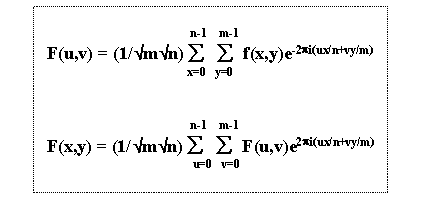![]()
Lecture Topic:
![]()
import java.awt.*;
import java.io.*;
import sun.audio.*;
import java.applet.*;
public class AudioFrame extends Frame {
private Panel readoutPanel = new Panel();
private AudioStream audioStream;
private AudioDataStream audioDataStream;
private byte ulawData[] = null;
private double doubleData[] = null;
AudioPlayer audioPlayer = AudioPlayer.player;
private String fileName;
private ObservableInt endPositionOfSamplesToGraph;
private ObservableInt startPositionOfSamplesToGraph;
private final double pi_2 = Math.PI * 2;
private final double pi = Math.PI;
private final double samplingRate = 8000.0;
private final double frequency = 440.0;
private Scrollbar horizontalScrollbar;
int x-offset; int w-size;. . .w-size = audioStream.getlength()-width -m -2;
public void init_menu() {
// my menu items
MenuBar menuBar = new MenuBar();
// Initialize the menu bar
setMenuBar(menuBar);
menuBar.add(m);
setBackground(Color.pink);
//set title
setTitle(fileName);
horizontalScrollbar = new Scrollbar(Scrollbar.HORIZONTAL, 0, 20, 0, 25);
add( "South", horizontalScrollbar);
show();
}
public boolean handleEvent(Event e) {
update();
if (e.target == horizontalScrollbar) {
switch (e.id) // more efficient, faster
{
case e.SCROLL_ABSOLUTE:
case e.SCROLL_LINE_UP:
case e.SCROLL_LINE_DOWN:
case e.SCROLL_PAGE_UP:
case e.SCROLL_PAGE_DOWN:
repaint();
}
return true;
}
Disk has an access time in m/s = 1* 10-3
RAM has an access time in = 1*10-9
In 2-D the DFT

u, x = 0,Ö., n-1
x, y = 0,Ö., m-1
DFT input
f(x) output F(u)
complex[] DFT(double f[] ) {
N = f.length; SQR_N = Math.SQRT(N); double Pi2onN = 2*MathPi(N); complex F[] = new complex [N]; for(u = 0; u<N; u++){for(int x = 0; x<N; x++){F[x].real = F[x].real + F[x]*cos(Pi2onN*x*u); F[x].imaginary = F[x].imaginary + f[x]*sin(Pi2onN*x*u);}} return F;
}
The DFT gives amplitude and Phase Harmonic at fs / N Hz intervals.
The FFT require logN/log2 = log2N
need a composite # of input samples.
N is typically a power of 2
Padding a sample with Oís alters the spectra.
In FFT we use divide and conquer, dividing up the sampling interval into subintervals.
Typically any length subinterval ( usually prime )
FFT may be performed iterative or recursively.
Danielson - Lanczos Lemma
Lemma: a DFT of length N can be written as the sum of 2
DFTís of length N/2 where N is a integer power of 2.
The first DFT is the even sample.
The second DFT is the odd sample.
Recall: DFT
m = 0,1Ö..N-1
call F(u), Fu and f(x), Fx
SO
x = 0,1,2,3,Ö 2x = 0,2,4,Ö 2x+1 = 1,3,5,Ö.
 Last Update: 04/09/97
Last Update: 04/09/97
Copyright © 1997- Douglas Lyon
Lyon@cse.bridgeport.edu